Damietta and Dust
I had thought of Damietta or bust - but dust was more appropriate.
No-one would describe Damietta as salubrious. It is a small and rather scruffy city in the north of Egypt nuzzled against the Delta and the Mediterranean sea. Just head for the bridge over the Suez, follow the canal north instead of taking the bridge, and when you get close to Port Said turn left. Well - that is the simple version. Actually you sail past the turnoff and do a u turn, then hook back and turn right. This manoeuvre is common in Egypt and I have never worked out why as it is utterly confusing, both for sign posters and for motorists. Add a few flyovers in between and drivers who tend to turn left from far right lanes and vice versa and you are getting the idea.
We came first through Ismailia. This is much nicer and known as a farming community which grows luscious fruit. Mangoes are just coming in and stall after stall lines the road, usually painted scarlet and arranged like shallow vertical stacked boxes, slanting back just enough to stop the contents from falling out. Long green and golden mangoes nestle against each other and shade from the greenest (which will keep longer) at the bottom to the orange gold at the top. The air is redolent with their scent. They alternate with melon mountains, and frantically beckoning sellers try to entice you to buy. Now and again a melon that rolled out to argue with a truck is splattered in colourful chunks across the road. The area is green and lovely.
We passed the bridge over the Suez - and it is truly a beautiful piece of engineering. Suddenly you are in drier and sparser countryside.
Then about half a kilometre on we passed the first container ship.

There is something truly disconcerting about passing ships in the desert - well, in very scruffy sandy scrub anyway. You know you are still a long way from the sea and there is no visible water as the narrow gap between the road and the canal is very slightly humped. Then - just about one hundred metres away you pass an oil tanker - and it is really huge. You can easily - even through the thick glass of Bob's armoured BMW - read quite small print on it. The No Smoking sign is big and obvious though - and I really hope that this sign is more obeyed and enforced than similar signs around Egypt.
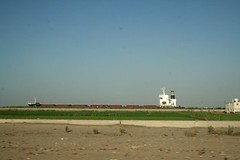
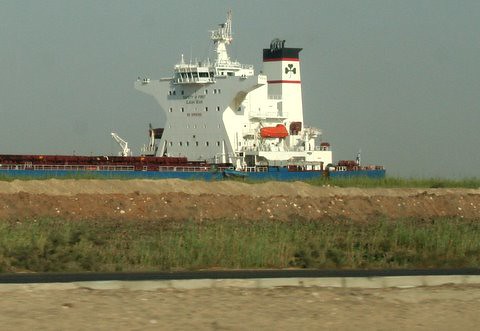
We drove into Damietta and were immediately aware of poverty and bleakness. Nothing was luxurious - except the huge number of furniture outlets. These studded the road side - so you had grotty concrete high rise, again and again then suddenly a marble faced extravaganza with Pharaonic columns and gilded lintels, triple storey and bulging with elaborate furniture. Then it was back to grotty coffee shops and places selling spare parts for engines until the next one.
We browsed through a few places and I started to feel a bit unsure of our reasons for being there.
I have a confession to make. Egyptian furniture is very very different. It is ornately carved, heavily gilded, and covered in very elaborate cloth - like heavily embroidered silk or very shiny satins. It is upholstered to the effect that I have often wondered if you would just keep slithering along it until you came off at the other end if you sat down too suddenly. Syrian furniture is much the same. It is like the French furniture at the court of Louis 14th (or was it 15th?), and the style is often nicknamed Louis Farouk.
When I had been in Syria for a few years I started to realise something very strange. I started looking at the carved chairs and thinking that they could be quite lovely, even in Australia, if they were just finished lightly with a satin varnish like Estapol, and covered in a beautiful fabric, but one that is more to our taste, like a heavy linen or cotton print. I left Syria before I actually considered buying one. In Jordan I managed to resist.
Here - I am capitulating utterly. We went to a furniture fair at the weekend. Looking at the pieces there I realised I wanted to do this. We are in an odd situation in that we are going back to no furniture in either lounge or family room. The ancient cane sets from Malaysia have been declared dead. The Furniture Fair seemed to specialise in the most elaborate of the style - with one set even having tiny lovebirds carved above the chairs. Syria went in for huge eagles with wings spread.
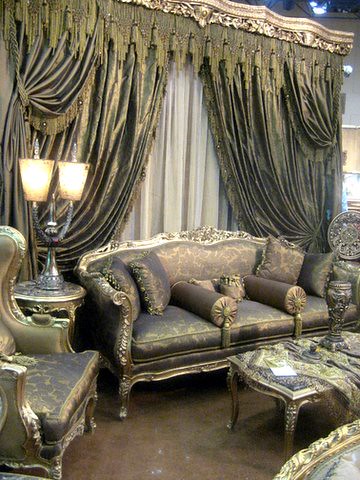
You see what I mean?
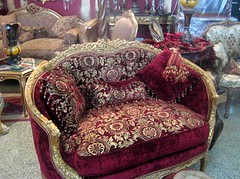

Jjust look at the bead tassels on the cushions. The red couch is classic Louis Ferouk, red flocked velvet and all.
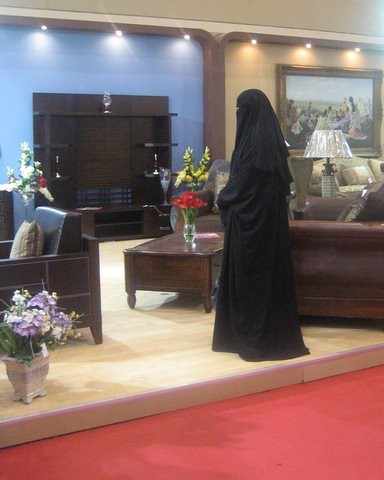
One lady admiring the modern settings.
I had been wanting to see Damietta for some time as it is known for its furniture and its skilled wood carvers. Where in Australia could you buy carved and beautiful wood without a fortune changing hands?
Take a walk with me through the grotty back streets, and it is like sieving for sapphires in Black Creek in NSW. Every so often in the mud you find a gleaming jewel.
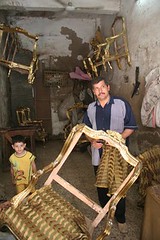
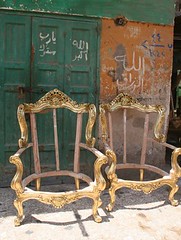

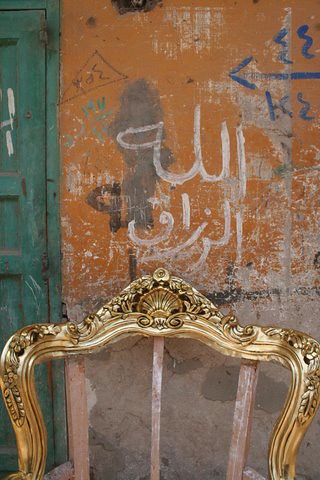

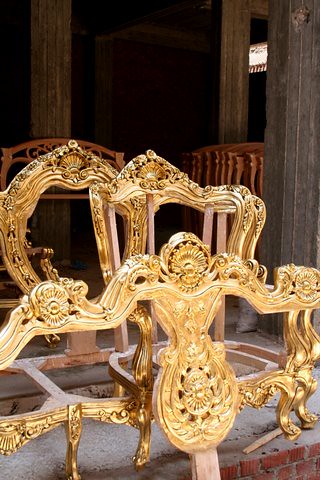


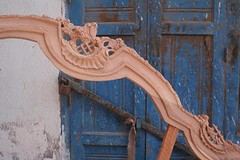
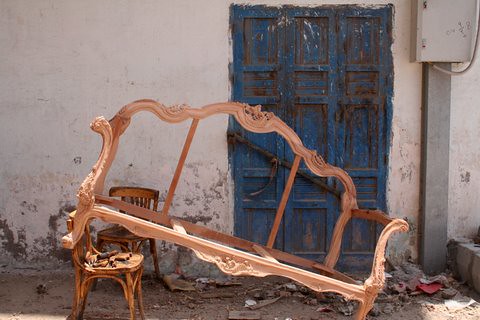
This is turning into a photo essay - but there is more to come.
We had met an uncle of a friend who was with us. One of the men in the Embassy is getting married i a few months. Before an Egyptian man marries he has to set his wife up with an apartment and furniture - all new, and all the best he can afford. He had given up his day off happily when we asked if he would like to come. He rang an uncle who met us on a bridge (what is it about bridges and Egyptians?). His uncle was leading us to a warehouse of unfinished wood.
As we came around a corner Bob said quickly and urgently, "Don't look, he has taken off his fingers." I swung obediently (did I promise obedience?) but not before I had seen a young boy - maybe a small fifteen or younger, with a strangely truncated hand - and a lot of blood, winding his shocked way towards a car. Blood dotted everything and our host in the shop we were now being led into was surreptitiously trying to rub it into the floor with his foot while showing us things high on the walls. It was hard for me not to try - gruesomely - to scan the floor for spare fingers, though I know here they would not have the money or technology to attempt to put them back.
It was a sudden and shocking reminder of the lack of work-safe practice in Egypt, and shadowed the rest of the day.
The warehouse was marvelous. Another photo essay is inevitable as the pattern on pattern was wonderful! I fell in love with a totally impractical table with Napoleonic decorations - shields and festoons of flowers in swags. It was impractical as it was too big and high and round for a coffee table, not quite big enough for a dining table, and the marvelous decorations made it totally impossible to put your legs under it without pain.
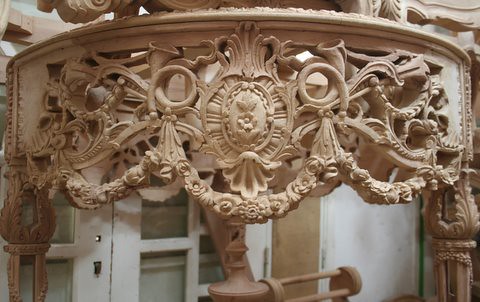
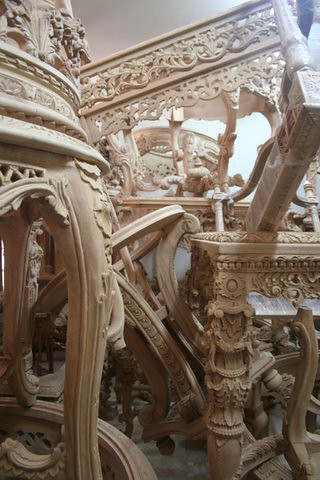
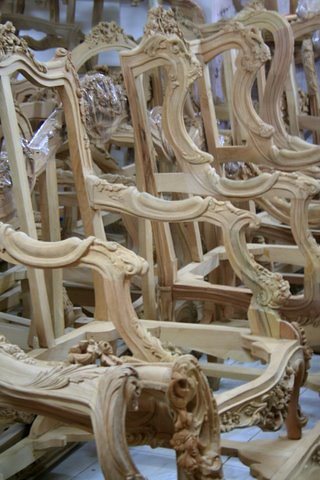
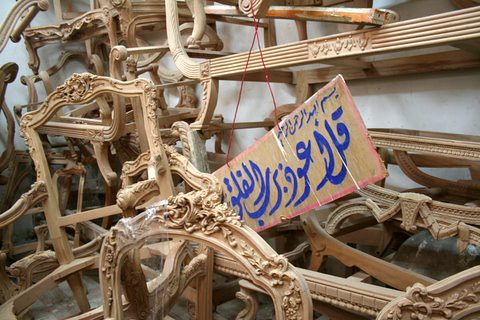
We chose two chairs and a narrow side table, and were persuaded that we also needed a smaller round side table to go between them.
One very elaborately but beautiful carved chair - in the naked timber - cost about three hundred dollars Australian. I can see it in beige and black toile at the moment, with honey coloured timber - but that could change. I have a photograph of the same design 'finished'.

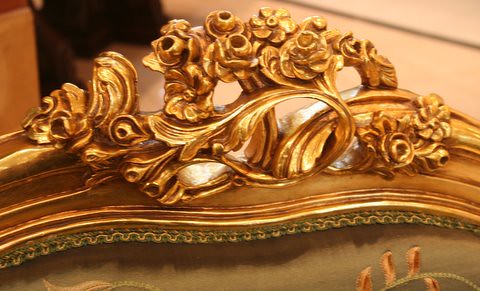
and a detail of the top of the chair.
And just to finish - some wrapped work ready for shipping against a Pharaonic backdrop in one of the huge shops. It was so like a major art piece that I loved it.
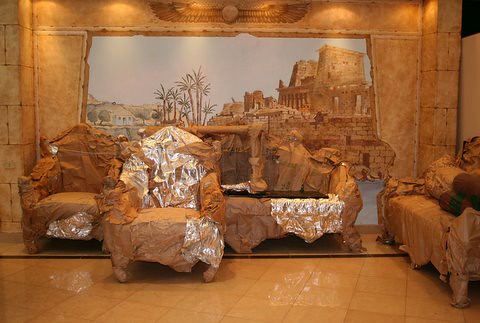
No-one would describe Damietta as salubrious. It is a small and rather scruffy city in the north of Egypt nuzzled against the Delta and the Mediterranean sea. Just head for the bridge over the Suez, follow the canal north instead of taking the bridge, and when you get close to Port Said turn left. Well - that is the simple version. Actually you sail past the turnoff and do a u turn, then hook back and turn right. This manoeuvre is common in Egypt and I have never worked out why as it is utterly confusing, both for sign posters and for motorists. Add a few flyovers in between and drivers who tend to turn left from far right lanes and vice versa and you are getting the idea.
We came first through Ismailia. This is much nicer and known as a farming community which grows luscious fruit. Mangoes are just coming in and stall after stall lines the road, usually painted scarlet and arranged like shallow vertical stacked boxes, slanting back just enough to stop the contents from falling out. Long green and golden mangoes nestle against each other and shade from the greenest (which will keep longer) at the bottom to the orange gold at the top. The air is redolent with their scent. They alternate with melon mountains, and frantically beckoning sellers try to entice you to buy. Now and again a melon that rolled out to argue with a truck is splattered in colourful chunks across the road. The area is green and lovely.
We passed the bridge over the Suez - and it is truly a beautiful piece of engineering. Suddenly you are in drier and sparser countryside.
Then about half a kilometre on we passed the first container ship.

There is something truly disconcerting about passing ships in the desert - well, in very scruffy sandy scrub anyway. You know you are still a long way from the sea and there is no visible water as the narrow gap between the road and the canal is very slightly humped. Then - just about one hundred metres away you pass an oil tanker - and it is really huge. You can easily - even through the thick glass of Bob's armoured BMW - read quite small print on it. The No Smoking sign is big and obvious though - and I really hope that this sign is more obeyed and enforced than similar signs around Egypt.


We drove into Damietta and were immediately aware of poverty and bleakness. Nothing was luxurious - except the huge number of furniture outlets. These studded the road side - so you had grotty concrete high rise, again and again then suddenly a marble faced extravaganza with Pharaonic columns and gilded lintels, triple storey and bulging with elaborate furniture. Then it was back to grotty coffee shops and places selling spare parts for engines until the next one.
We browsed through a few places and I started to feel a bit unsure of our reasons for being there.
I have a confession to make. Egyptian furniture is very very different. It is ornately carved, heavily gilded, and covered in very elaborate cloth - like heavily embroidered silk or very shiny satins. It is upholstered to the effect that I have often wondered if you would just keep slithering along it until you came off at the other end if you sat down too suddenly. Syrian furniture is much the same. It is like the French furniture at the court of Louis 14th (or was it 15th?), and the style is often nicknamed Louis Farouk.
When I had been in Syria for a few years I started to realise something very strange. I started looking at the carved chairs and thinking that they could be quite lovely, even in Australia, if they were just finished lightly with a satin varnish like Estapol, and covered in a beautiful fabric, but one that is more to our taste, like a heavy linen or cotton print. I left Syria before I actually considered buying one. In Jordan I managed to resist.
Here - I am capitulating utterly. We went to a furniture fair at the weekend. Looking at the pieces there I realised I wanted to do this. We are in an odd situation in that we are going back to no furniture in either lounge or family room. The ancient cane sets from Malaysia have been declared dead. The Furniture Fair seemed to specialise in the most elaborate of the style - with one set even having tiny lovebirds carved above the chairs. Syria went in for huge eagles with wings spread.

You see what I mean?


Jjust look at the bead tassels on the cushions. The red couch is classic Louis Ferouk, red flocked velvet and all.

One lady admiring the modern settings.
I had been wanting to see Damietta for some time as it is known for its furniture and its skilled wood carvers. Where in Australia could you buy carved and beautiful wood without a fortune changing hands?
Take a walk with me through the grotty back streets, and it is like sieving for sapphires in Black Creek in NSW. Every so often in the mud you find a gleaming jewel.










This is turning into a photo essay - but there is more to come.
We had met an uncle of a friend who was with us. One of the men in the Embassy is getting married i a few months. Before an Egyptian man marries he has to set his wife up with an apartment and furniture - all new, and all the best he can afford. He had given up his day off happily when we asked if he would like to come. He rang an uncle who met us on a bridge (what is it about bridges and Egyptians?). His uncle was leading us to a warehouse of unfinished wood.
As we came around a corner Bob said quickly and urgently, "Don't look, he has taken off his fingers." I swung obediently (did I promise obedience?) but not before I had seen a young boy - maybe a small fifteen or younger, with a strangely truncated hand - and a lot of blood, winding his shocked way towards a car. Blood dotted everything and our host in the shop we were now being led into was surreptitiously trying to rub it into the floor with his foot while showing us things high on the walls. It was hard for me not to try - gruesomely - to scan the floor for spare fingers, though I know here they would not have the money or technology to attempt to put them back.
It was a sudden and shocking reminder of the lack of work-safe practice in Egypt, and shadowed the rest of the day.
The warehouse was marvelous. Another photo essay is inevitable as the pattern on pattern was wonderful! I fell in love with a totally impractical table with Napoleonic decorations - shields and festoons of flowers in swags. It was impractical as it was too big and high and round for a coffee table, not quite big enough for a dining table, and the marvelous decorations made it totally impossible to put your legs under it without pain.




We chose two chairs and a narrow side table, and were persuaded that we also needed a smaller round side table to go between them.
One very elaborately but beautiful carved chair - in the naked timber - cost about three hundred dollars Australian. I can see it in beige and black toile at the moment, with honey coloured timber - but that could change. I have a photograph of the same design 'finished'.


and a detail of the top of the chair.
And just to finish - some wrapped work ready for shipping against a Pharaonic backdrop in one of the huge shops. It was so like a major art piece that I loved it.



4 Comments:
Mum, that has to be one of my favourite blog posts of all time!!! Love the pictures and the way in which you managed to mention so much of what makes Egypt really Egypt - fruit stalls, mad drivers, poor OH&S, and above all, their bizarre taste in gaudy furniture. I really hope we can manage a return visit in December! I'm torn between wanting one because they're affordable and yet reviling in the idea of owning something that unbelievably ornate and gilded, so throughly out of character with everything else I own...
Love, Sambo.
Ah...the furniture!!! My first flat in Maadi was once lived in by the owners. The master bedroom had a wardrobe built into it, ornately carved (and blissfully stained dark, rather than painted gold). The bed and the credenza were the same. Gorgeous...just not my taste.
I've only just discovered your blog. I adore Cairo and it's special brand of chaos - you capture it perfectly! I've never lived there, but have been to Egypt a number of times, and I'm always drawn to Cairo. I look forward to your next post.
These chairs make me drool but I don't want the gilded effect either. Nor even a light coat of semi mat varnish. I fancy one painted in funky colours, fuscha (sp?) turquoise, blue, you get the idea.
Or am I just perverse?
Post a Comment
<< Home